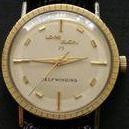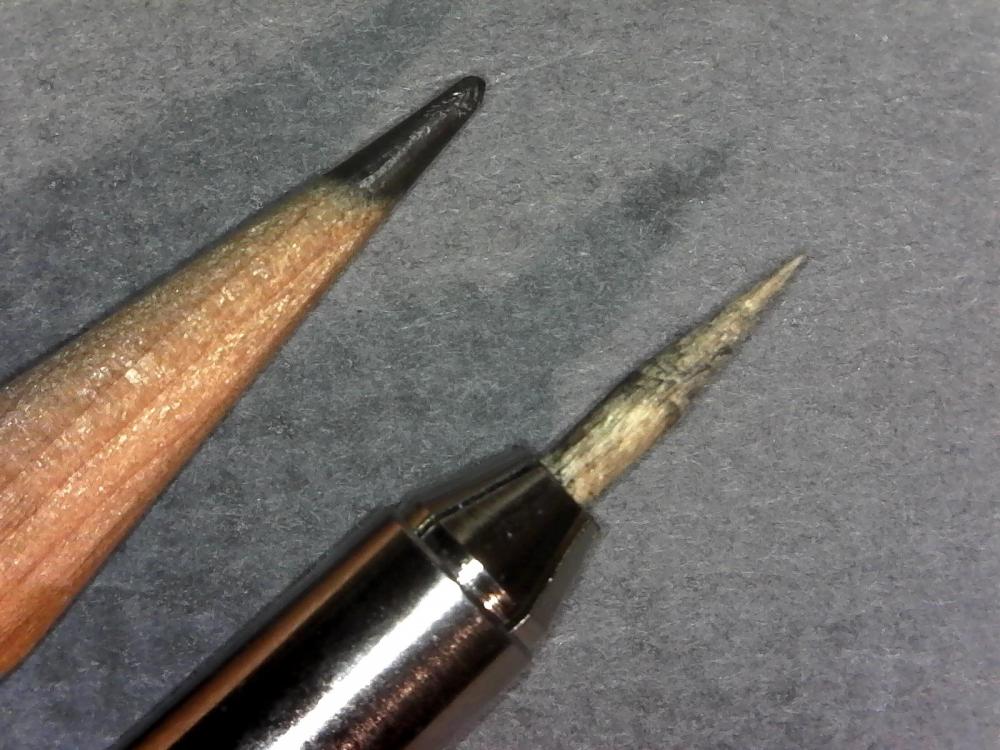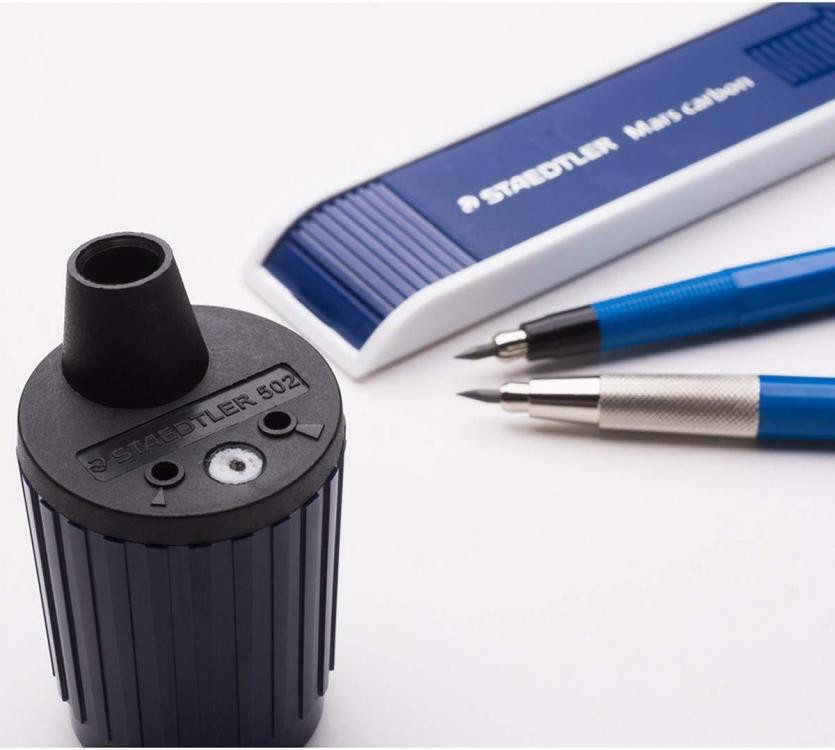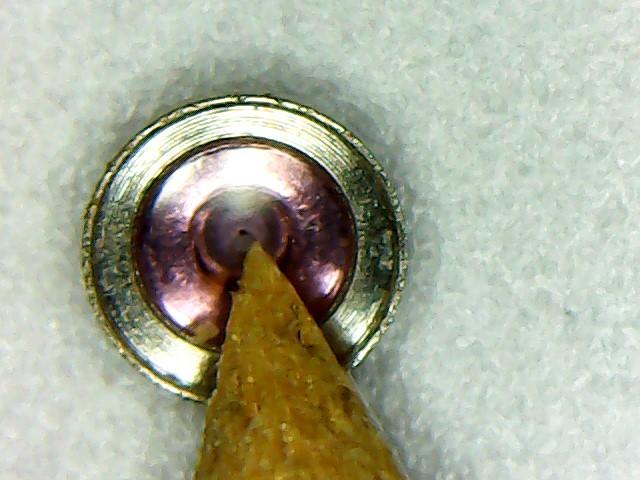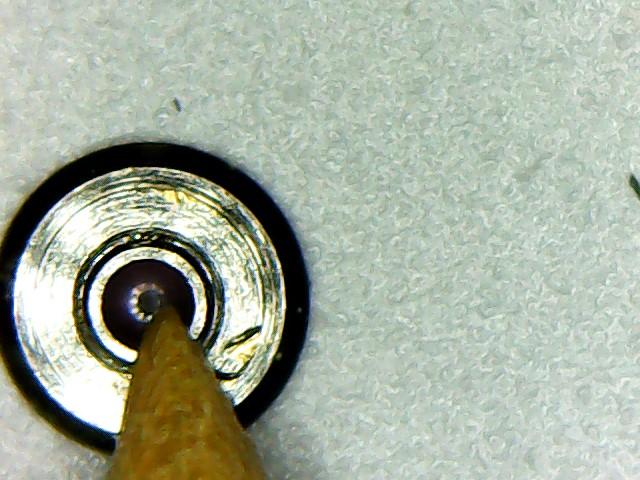Leaderboard
Popular Content
Showing content with the highest reputation on 11/04/19 in all areas
-
If you like pictures and like to hold something in your hand I found you a PDF. Normally on modern watches the escapement should be fine unless you start changing components. Unfortunately as quoted above others seeking a quick solutions to unknown problems feel obligated to play with things especially banking pins. Banking pins are a common target because they're bendable or in the case of American pocket watches they can be rotated. So this means on watches like that you always have to check that there where there supposed to be. In the PDF below page 9 Section 5 shows the purpose the banking pins for horn clearance only. http://facweb.northseattle.edu/dmcconnon/Escapement/Escapement handout.pdf3 points
-
2 points
-
Hi, its a standard ladies elgin movement, no real service sheet as such, just an interchangable parts list if needed. you can pick them up pretty cheaply off fleabay if you need parts.2 points
-
2 points
-
Depth of lock is something that you get a feel for when inspecting escapements. It needs to be deep enough to ensure that it is safely locked, and you can move the pallet fork across very slightly, release, and observe the “draw” to see what the action is like. On modern watches like these, I very rarely adjust thw locking. On adjustable banking pins (or at least bend-able), you always have to check it and will often find that they have been mis-adjusted. It seemed to be a common misconception that opening the banking pins was a quick fix for mis-locking. Bear in mind that if the pallet stones were moved to change the depth of lock then this also adjusts the drop. The angle of drop is wasted energy from the escapement as potential impulse is not translated into the balance while the escape wheel is disengaged from the pallets.2 points
-
Even if this is a watch repair forum we can't provide any special place to get parts, that is you have to look online just as anyone does. Also, you posted your question in the section where people show their completed projects in full detail. And, we have a section where it's considered polite to introduce oneself even before asking questions.1 point
-
My mistake...I assumed it was acrylic. Mother's is a brand of car car products. Their magnesium (mag) and aluminum polish is outstanding.1 point
-
1 point
-
Hi You might find this interesting reading if you are interested in french clocks. One thing to remember with french clocks the pivots are glass hard and brittle so when dismantling ,cleaning and rebuilding be very carefull and dont use force when putting the back plate on and be gentle when aligning the pivots and holes and you will be ok. dating french clocks.pdf1 point
-
I like the case and dial. You could use the single pin pallet you have and halve the time reading to get an accurate time, (or do you double it for one pin only?).1 point
-
1 point
-
That back plate number is the movements serial, the pendulum should have the same on it, I have never seen a hexagon shape pendulum before on a French clock. Someone has made a mess of bending that crutch to try and set it in beat. The oil sink on the large wheel loos a bit suspect going by the photo. When its all cleaned up movement and case you will have a nice looking clock.1 point
-
A bit of drift but still related to pegwood. I have a table pencil-sharpener bolted to my desk. I use it to get a nice conical tip and then use a knife to get a fine point. If I hand shape the point I find I really need to focus on getting the tip central otherwise it wont spin concentric when you roll it between your fingers. Te sharpener does 95% of the work and I just contribute the last 5percent. Note, while you may get by with a hand sharpener, the table type ones hold it central better. Anilv1 point
-
The gentian wood would be really fragile, it's close to pithwood in consistency. Great for polishing bevels, not much else. Regular pegwood is light years beyond toothpicks, the "normal" horotec i described above is a-ok for jewels down to say 0.07mm no problem. You should peg the pallet hole jewels if nothing else, a good 30-40 degrees of amplitude lie there!1 point
-
I wanted to pick up on this again, as I'm still not satisfied with the results I'm getting. Here are some pictures: That is really the best I can do with a freshly sharpened scalpel blade and the 3mm dia. pegwood I have. I don't think the point is sharp enough or long and thin enough to really get in the hole and clean it. Also, I'm worried about the tip breaking off in the hole. A flake dropped of while I was taking the first photo. You can see it at 7 o'clock. I read in another thread that there are different qualities of pegwood. Is that my problem, or am I just not cutting it with the knife? My dog sheds loads of sturdy bristles. I am seriously considering using them instead.1 point
-
This guy always gives good explanations: My own documentation is BHI material and is copyrighted, so I will not share it, but that video gives a good description. It's important to realise what happens at the different phases of the escapement motion. If it's too much to take in at once, then start with the anchor escapement and advance from there. That is how escapements are traditionally taught, starting with the simplest.1 point
-
Does this happen once or twice a day ? If once a day then it's probably something to do with the date changing mech not quite running smoothly and the 'drag' causing an issue. If twice a day then put the crown in the time-change position and take a close look at the hour hand as your move it slowly around the dial ... does it sweep cleanly with an equal distance between it and the dial at all times? You just want to ensure that the dial is seated correctly and the hour hand was put back on level. If this checks out then be certain there isn't some some contaminate somewhere e.g. some fluff or dirt in between a tooth on the hour wheel.1 point
-
Hi and welcome to the forum, Regarding tools, at this point in your hobby quest purchase the best that you can afford at the present, Screwdrivers are the main tool of use and for your own sake purchase some good ones, Tweezers like wise, Dumont tweezers are very good but as a starter they might be a little expensive. I have two pairs of dumonts which have served me well over 50 years and are still good. Loupe's of course X3,X5,X10 or what ever you find comfortable for your eyesight. The rest you will pick up as time goe's on, Books ,De Carles books , Brian loomes, Laurie Penman. and of course The videos made by our Host Mark are well recommended as instructional material . Armed with all that you will be ok plus if you get stuck there is always the members on the WRT to lean on who give their advise freely and generously. Welcome and enjoy1 point
-
Thank you, @Marc! That table which you linked to is potentially very useful but I’m having serious trouble understanding the French headlines. Perhaps those of us interested can “decode” it together? For every column with a parenthesis and a question mark I don’t feel sure at all and need your additional info! Column 1: Calibres de base = Base calibre Column 2: Grandeur = Ligne size Column 3: Calibres dérivés = Derived calibres Column 4: Ø trou = Hole diameter (I guess, but what hole?) Column 5: Bloc dessus = Upper shock block (for the balance cock? I’m just guessing) Column 6: Bloc dessous = Lower shock block (in the main plate? I’m just guessing) Column 7: Creusure plat. = Recess ??? (I have no idea!?) Column 8: Creusure cad. = Recess ??? (I have no idea!?) Column 9: Clavette = (I have no idea!?) Column 10: Vis = (Means “screw” in French but again, I have no idea?) Column 11: Chaton empierré = (Google translates this to “stoned kitten”. Jewel housing, no?) Column 12: Pirre de dessus = (Google translates this to “Stone from above”. Could it be the balance cap jewel on the balance cock side?) Column 13: c. pivot dessous = (Something a about "Pivot underneath". Could it be the balance cap jewel on the main plate side?) Column 14: Ressort de dessus = (I guess this could be the anti-shock spring for the shock block in the balance bridge?) Column 15: c. pivot dessous = (Well, if the previous is an anti-shock spring then this would be the anti-shock spring for the shock block in main plate?) A French Chaton empierré!?1 point
-
Well joe, you do have an interesting way to explain things! "dilute the oil", meaning the pallet stone oil? "grind the pallet", grind exactly what? "my approach", where do you show your approach, or do you mean the "approach" of applying kerosene/diesel fuel to the escape wheel teeth?1 point
-
You would need to remove the calendar mechanism to reveal the click. I’ve added a photo again showing the brass plate removed. You can then release the mainspring tension using the crown as normal. Sent from my iPhone using Tapatalk1 point
-
I serviced one of these about a couple of week ago. I found the ratchet wheel (which is what it is) was friction fitted to the barrel arbor. With some careful encouragement with 120 screwdriver, turning the driver as I rotated the barrel, the wheel popped off. Of course, once off, the arbor was freed from the barrel. Refitting was done using brass tweezers, again rotating while pushing down (not much force required). The servicing went relatively well and the watch is now winds perfectly and is ticking away happily! Hope that helps? Sent from my iPhone using Tapatalk1 point
-
Many parts can be recovered. It really depends what is rusted and how bad. Watch this...1 point
-
1 point


